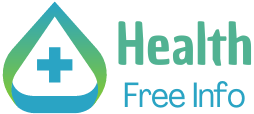In this article, we will explain Fungal Infections that affect the skin.
They are multi-cellular, unicellular eukaryotic organisms found everywhere in the world. Visible fungi in an individual’s eyes, such as mushrooms, microscopic yeasts and moulds, are found in various varieties.
Fungal illnesses kill more than 1.5 million and impact more than one billion people. Yet, they remain unreported by public health officials, although most deaths caused by fungal illnesses are preventable.
The most serious fungal infections result from various illnesses like asthma, AIDS, cancer, organ transplants and corticosteroid treatments.
What is a fungal infection?
Fungal infections can be a problem for everyone and may appear on various organs. A jock with the foot condition, an infant with thrush newborn with thrush, or women suffering from a sexual yeast problem in the vagina are only some instances.
Fungi are microorganisms that are characterized by a chemical in their cell walls that are called Chitin.
Certain fungi, including various types of mushrooms, are edible. Different types of fungi, such as aspergillums, can be very hazardous and can cause dangerous diseases that can be fatal.
Different kinds of fungi may cause fungal illnesses. In certain instances, the fungi that aren’t normally found in or on your body could invade it, causing an infection. In other instances, some fungi found in or around the body can grow beyond control, causing an infection.
Fungal infections can be infectious. They can pass between people. In some instances, it is possible to catch the fungi that cause disease from animals, soils or even surfaces.
Fungal Infection Symptoms
A fungal skin infection might cause:
Irritation
Skin with a scaly appearance
Redness
Itching
Swelling
Blisters
Types of Fungal Infections
Athlete’s foot
The name tinea pedis also refer to the athlete’s foot. It’s a kind of fungal infection that affects the feet, skin and also your nails and hands.
The cause is the dermatophytes group, a class of fungi that thrive in moist and warm spaces between your toes.
It is particularly prevalent for athletes and can be transferred from one person to another.
You may also get it by stepping on contaminated surfaces, such as the shower in a public space or locker room floors.

Symptoms
An athlete’s foot can cause itching, burning, stinging or burning sensation in your toes or other parts of your feet. The skin may also peel, crack or even blister.
Diagnosis
The doctor can spot the presence of foot fungus by looking at the skin’s symptoms. If your doctor isn’t 100% sure of the cause, a small portion of the skin may be scraped and tested for the fungus.
Treatment
There are many topical over-the-counter (OTC) antifungal drugs that you can take to treat foot problems caused by athletes. If none of them works, your doctor might recommend a stronger medication.
Jockitch
The name tinea cruris can also refer to Jockitch. It’s a fungal condition that may cause skin irritation on your groin, inner thighs, and buttocks.
Similar to athlete’s foot, it’s caused by dermatophytes, the fungi group that thrives in humid and warm regions.
This infection typically affects males and boys; however, girls and women are also susceptible to it.

Symptoms
The most common symptoms of jock itch are:
Redness
Itching
An intense sensation
Variations in the colour of skin
Skin cracks or flakes
An itch that is worse as you exercise
Diagnosis
A doctor may recognize jock itching by looking at the affected skin. To determine if there are other diseases, such as psoriasis or psoriasis. They can do the skin cells off and examine them.
Treatment
Jockitch is usually treated at home with a simple method of ensuring the area is dry and clean and applying OTC antifungal cream powder or spray.
If the symptoms don’t improve after two weeks of treatment at home, consult your physician. They will be able to prescribe stronger antifungal medicines.
Ringworm
Ringworm is a fungal condition that can cause scalp and skin irritation. Like athlete’s foot and jock itch, it’s brought on by Dermatophytes.
Ringworm also belongs to the fungi group that thrives on the skin, especially in humid and damp areas within your own body.

Symptoms
It is usually an itchy, reddish flaky rash. In time, the ringworm patches can grow and create red rings.
Other indicators can include:
Patches of blisters that appear to be leaking
There are patches of hair loss that appear bald.
Patches that resemble rings but with a darker outside edge
Thick cracks, discoloured nails (if the infection is present in the nails)
Diagnosis
A simple examination of your skin will reveal ringworm. The fungus shines under black light. Your doctor will know whether you’re suffering from an infection by shining the dark light across the area affected.
A small amount of the affected area may also be removed and sent to a laboratory to be tested.
Treatment
Similar to jock’s itch as well as athlete’s foot, ringworm is usually treatable by using OTC antifungal creams, sprays, gels or ointments.
It is possible to require an appointment with a doctor if the condition is more severe or if the disease is located on your scalp or nails.
Yeast infection
Candida albicans is a fungus that can threaten your mouth, skin, urinary tract, gastrointestinal tract or even genitals.
It’s normal to have small quantities of candida Albicans on your skin and throughout your body.
If these fungi multiply to a large extent, they could cause an infection referred to by the name of a yeast infection.

Symptoms
If you have an infection of yeast in your mouth or throat, this is known as oral thrush.
Thrush can cause white patches to appear in your throat and mouth. Patients on prolonged antibiotic treatment often get this type of infection.
For women, vaginal yeast infections are quite frequent. They can lead to:
Pain
Itching
Clumpy discharge
Swelling
Redness
Diagnosis
To test for oropharyngeal thrush (or oral), your physician may use a swab of your throat to apply pressure to the areas affected—the swabs for the throat look similar to an earring.
The doctor may send the swab into a lab where the technicians will test it for fungi to determine the fungi types and other microbes.
Your doctor will examine your pelvis to identify the presence of a vaginal yeast infection; if they’re unsure if your symptoms are due to yeast infections, they decide to wipe the area and request an in-lab test.
Treatment
The treatment options you have will depend on the yeast infection you suffer from and whether or not you experience yeast infections regularly.
Thrush can be treated using oral antifungal medicines. They can be found in the forms of lozenges, tablets or mouthwash.
If you notice an early vaginal yeast infection, you may be treated with OTC products. If not, your physician can prescribe antifungal medication that comes in pills, cream as well a vaginal suppository.
The doctor may also suggest probiotics, like Acidophilus Lactobacillus. Probiotic supplements contain good bacteria that could help restore your body’s microbial balance.
Toenail fungus
Onychomycosis is one of the most common fungal infections affecting fingernails, toenails, and the nail bed. It’s often referred to as tinea unguium.

Symptoms
Toenail fungus typically begins with a light-coloured, small area within your nail. As it grows, it alters the shape and colours your nails take on. As time passes, it could make your nail larger and more fragile.
Common signs are:
The nail is swollen, and the scaling has begun.
Yellow or white streaks underneath the nail
Flakiness or crumbling of the nail
Nails that are brittle or thick
Lifting from the nail bed
Diagnosis
If you want to determine if you suffer from fungus of the toenails, your doctor may scrape pieces off the nail affected. They will then examine the scrapings with the microscope.
This will help them discern the difference between a fungal illness and other ailments that produce similar symptoms.
Treatment
It could take days to heal fingernail infection and months to treat toenail problems.
OTC drugs are usually ineffective. Your doctor might prescribe nail lacquer to be brushed on as nail polish or an antibiotic you consume in your mouth.
Because this type of disease can be difficult to cure, it’s crucial to avoid spreading it.
FAQ about Fungal Infections of the Skin Its diagnosed, and treatment
What are the causes of fungal infections?
Being extremely sweaty or working in a humid, warm setting could increase the risk of contracting a fungal disease. Fungal infections require an environment that is humid and warm to thrive. Being barefoot in damp areas such as gyms, showers, locker rooms, and showers is also a way to increase the risk. These public spaces are typically full of fungal spores.
What is the best way to kill the fungus?
White vinegar, also known as Acetic Acid, can help eliminate the fungus by diluting it in warm water. Vinegar acid can create an ideal environment for the fungus to thrive in hospitals and help remove the infection in the toenails caused by fungal fungus.
How can you get rid of fungus on your body?
Antifungal creams, a lot of that are available on the market. The stronger prescription medications might work faster. Oral medications, if the fungal infection is serious.
What food items fight fungus within the body?
Ideally, your food plan should include the two foods that are great for warding off yeast and fungi and antifungal foods that kill both yeasts and fungi.
Anti-Fungal Foods.
Garlic.
Carrots.
Coconut Oil.
Ginger.
Onions.
Pumpkin Seeds.

